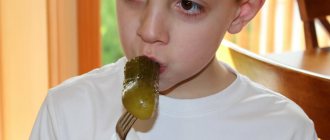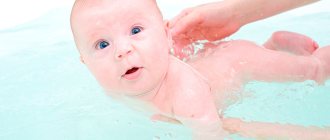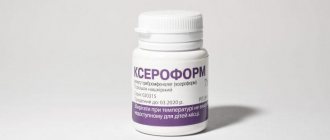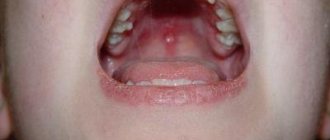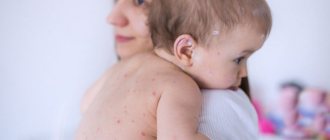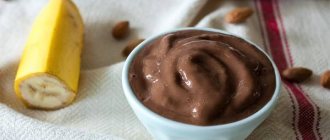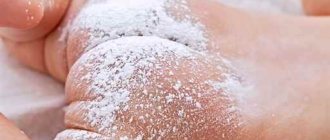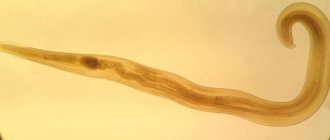Swimming for congenital diseases of the musculoskeletal system
Water is an ideal environment for safe and effective recreational and therapeutic procedures, regardless of the child’s age.
The medical pools offer swimming and aquatherapy classes for children with disabilities and special needs. We provide treatment:
- diseases of the hip joint in children (dysplasia, dislocation, subluxation)
- congenital torticollis, scoliosis
- hypo- and hyper-tonicity, cerebral palsy
- myopathies, myodystrophies
All classes are conducted as prescribed by a physical therapy doctor and under the guidance of experienced and attentive instructors with higher education in the specialty “Adaptive physical education for persons with health problems.” We have a special place in the habilitation and rehabilitation of children with diseases of the musculoskeletal system - both congenital and acquired.
The most popular forms of aquatherapy include:
- Swimming (at all levels, including learning to swim).
- Water yoga.
- Physical exercises in an aquatic environment.
- Exercises to improve balance with flotation devices.
- Breathing exercises.
- Walking exercises.
Social games to help improve social interaction, eye contact and sportsmanship.
Optimal age
It is necessary to distinguish between two types of swimming – professional and “for yourself”. You can begin to master regular swimming as early as infancy, but, of course, under the strict supervision of an instructor. From two to three years old, you can start teaching your child to swim, but this should be done easily and unobtrusively, in the form of a game.
Until the age of five, activities should not be given too much importance, otherwise the child may develop a persistent aversion to water and swimming pools. A child is enrolled in professional sports at the age of five to seven, when he is already able to listen to a coach and is quite independent. Even if he already knows how to float, it is necessary to teach him the technique.
PHYSICAL AND PHYSIOLOGICAL BASES OF THE THERAPEUTIC EFFECTS OF SWIMMING AND AQUATHERAPY
Water exercises in the pool are the most attractive form of therapeutic physical education for children with diseases of the musculoskeletal system. The buoyancy of water reduces the effects of gravity and provides support for an upright body position during exercise. These properties of water help children gain more freedom in their movements than when exercising on land. The viscous resistance of water creates harmonious aerobic exercise, prevents jerks and impacts when performing exercises that can damage joints, muscles and bones in children. Exercising in warm water (30°-31°C) helps muscles relax better, reduces spasticity, and increases joint mobility.
Swimming and aquatherapy improve respiratory function by training auxiliary respiratory muscles that are rarely used on land. Swimming perfectly trains the cardiovascular system and helps improve a child’s self-esteem.
How to exercise in the pool?
So, the pool affects growth, helps and promotes human health. It remains to sort out some working aspects so that swimming lessons bring you maximum benefit.
You need to start your workout with a warm-up, then the main part, which consists of swimming “backstroke”, “breaststroke”, “belly crawl” and then recovery. Focus on the distance. The further distance you can swim without resting, the better. Intensity and speed also matter. If your goal is to increase your height, then it is preferable to train at alternating fast and slow paces than to swim at a constant slow pace. It is during intense muscle work that the production of growth hormone increases. If you want to add load, use weights.
Remember that intervertebral discs do not open and lengthen immediately after entering the water. This can take several hours, but usually no more than 30 minutes of intense swimming.
Well, that’s basically all about swimming for growth! I think you understand everything! There's nothing complicated. We go to the pool regularly. There we swim breaststroke, crawl, and backstroke. We sleep and eat well. We get the desired result. We continue to swim in the pool to maintain good health, but not so often and intensely. All!
So I take my leave. I hope you liked the article! See you in touch!
Best regards, Vadim Dmitriev
FEATURES OF AQUATHERAPY FOR FEMOR DYSPLASIA
Hip dysplasia is a general term used to describe certain abnormalities of the hip that result in inadequate retention of the head of the femur in the acetabulum. Shallow acetabulum, femoral or acetabular aberration and displacement or distance of the femoral head are some of these congenital anomalies in children. Hip dysplasia exists in two forms: developmental hip dysplasia and congenital hip dislocation. Developmental dysplasia is created during injuries during childbirth in women with a narrow pelvis and birth canal, and during improper tight swaddling of the baby for a long time. Congenital dysplasia is caused by genetic factors.
Aquatherapy helps in gaining muscle strength to stabilize the joint, and in reducing excess weight with concomitant obesity. Strong muscles will act as shock absorbers and provide more support to the hip.
Weight loss for overweight children can significantly reduce hip stress and pain. Also, aquatherapy can increase the elasticity of the connective tissue around the joint, which will also help reduce pain.
FEATURES OF AQUATHERAPY FOR MUSCULAR TORTICOLIOUS
Torticollis is a condition defined by abnormal, asymmetrical position of the head or neck. Many conditions can lead to the development of torticollis, including muscle fibrosis, congenital spinal abnormalities, decreased blood supply to the muscles, complications during childbirth, or poor positioning of the baby inside the uterus during the last few weeks of pregnancy. In addition, infants often develop torticollis as a result of prolonged lying on their backs or sitting in car child seats. With early detection of torticollis and timely treatment, up to 80% of children are cured without long-term consequences.
Aquatherapy has a positive effect on torticollis, increasing neck mobility, improving balance and reducing pain by promoting muscle stretching in the direction opposite to the usual position. With the help of aquatherapy, the child’s ability to turn his head to the sides, lower his chin to his chest, raise his head and keep it in balance with the center of gravity, and occupy a normal sitting, upright and walking position is improved.
Swimming teaching methods
"Float"
When inhaling, dive to the bottom, clasping your knees with your hands. After the dive, the baby will end up with his back up due to the air in his lungs.
"Jellyfish"
The actions are the same, but when ascending, the hands release the knees, the limbs lie on the water for some time.
"Star"
Arms and legs are spread, the student lies on the surface with the help of support or independently.
Training slide
The water is at chest level, arms are raised above the head, holding your breath, and the baby pushes off from the bottom from an angle. Holding your breath, you need to slide further, keeping your hands motionless.
Swimming skills development
Position on your back, supported by the armpits or neck, legs straight. Up and down movements are made. Exercise “frog” (legs bent to the sides, sharp push with straight legs). The same elements are worked on the stomach.
Only after mastering the preparatory exercises is it possible to move directly to swimming lessons for children.
An adult shows you how to move your arms and legs on the shore, then the technique is tested in the water. During training, an adult is nearby, supports, points out shortcomings, shows how to do it correctly.
FEATURES OF THERAPEUTIC SWIMMING FOR CHILDREN WITH SCOLIOSIS
Scoliosis is a pathological condition in which there is a lateral curvature of the spine, repeating the shape of the letters C or S. Most often, scoliosis occurs in children aged 6 to 15 years. However, the diagnosis is more common in girls. With minor curvatures, scoliosis does not manifest itself in any way. However, if severe, back pain and even difficulty breathing may occur. If left unattended, scoliosis can lead to the formation of severe chronic pain syndrome.
Therapeutic swimming for children with scoliosis can significantly alleviate symptoms and reduce the degree of spinal curvature. With systematic exercises under the guidance of a doctor for a long time (from 4 weeks), aquatherapy can make it possible to refuse surgical intervention to correct scoliosis.
For many children with scoliosis, the most difficult aspect is not even reducing the severity of pain or correcting the cosmetic defect of the curvature of the back, but overcoming the physical limitations that the curvature of the spine imposes on them. Being in water, when the body loses up to 90% of its weight, and the water provides support and viscous resistance, allows you to perform movements without jerking or shaking, significantly reducing the load on the spine. Water also provides stability to your body position, prevents falls and allows you to train your muscles. Swimming allows you to safely exercise the muscles in your arms, legs and back, which can improve your overall balance and muscle strength.
Swimming also improves blood circulation in body tissues, reduces muscle spasms, relieves stress and neuro-emotional tension, reduces chronic pain or helps to better adapt to them. When a child with scoliosis starts swimming, he becomes more energetic and mobile, gains a positive outlook on the world and a sense of self-confidence.
With scoliosis, swimming styles with throwing movements of the arms and body (breaststroke) and participation in speed competitions are contraindicated, which can lead to the development of complications.
On predicting swimming ability
It should be noted right away that when predicting swimming ability, focusing only on sports results is insufficient. As you know, sports success in childhood and adolescence is not a guarantee of achieving high skill in the future. The advantage of one child over another may be caused by different rates of maturation, and this factor, if not taken into account, can significantly distort the accuracy of the forecast. The current practice of selecting children and youth sports schools based on the results of control exercises performed by children of the same age creates advantages for accelerated athletes and limits the path to big-time sports for children with somewhat delayed development, who potentially have no less athletic abilities.
Criteria such as the speed of mastering techniques or extensive training experience are also unreliable for determining the true talent of a swimmer.
The basis for forecasting is the stability of certain indicators indicating swimming ability. Stable characteristics are those that retain their significance during the growth and development of a child, boy or girl. These include: height (body length), physical performance, joint mobility, strength capabilities. Sometimes these indicators are called conservative because they are difficult to change as a result of training and are largely determined by heredity. That is why they serve as reliable guidelines for sports selection, in contrast to non-conservative traits. The latter can be significantly improved during training, and should be relied upon only when determining the degree of training and the state of sports form. Of course, stable indicators also improve under the influence of training, but the magnitude of their change largely depends on natural conditions.
Height . For forecasting, the ability to predict the height of an adult based on a child’s height is of great importance (figure). From the data shown in the figure, it is clear that the age range from 8 to 12 years is optimal for predicting future heights (correlation coefficient 0.8-0.9). For example, boys reach 86% of their future height by age 12. When predicting the height and physique of children based on these dependencies, the obtained values should be considered more as an indicator of expected development, and not as an exact prediction.
Correlation coefficients between height values of the same person in childhood and adulthood. Summary chart compiled according to data from foreign authors: 1 - J. Tanker, 2 - R. D. Tuddenham and M. Ya. Snider, 5 - K. Simmons, 4 and 5 F. K. Schuttelworth
It must be taken into account that different parts of the human body grow at different rates. Thus, the foot at any age turns out to be closer to adult size than the lower leg, and the lower leg is closer than the thigh (J. Tanner). Therefore, for example, foot length in combination with other measurements may serve as a more reliable indicator in predicting height than height itself.
Physical performance . For success in swimming (as in other cyclic sports), the physical performance (and, therefore, endurance) of the athlete is of great importance. Is it possible, by assessing a child’s natural prerequisites for the development of this quality, to predict his future development?
Let us present experimental material characterizing the stability of the endurance indicator in children 11-18 years old, who were under observation for 8 years (Ulbrich). Correlation coefficients were calculated between heart rates in the same children performing a standard load at different ages:
| Age (years) | Correlation coefficients |
| 11—18 12—18 13—18 14—18 15—18 16—18 17—18 | 0,6189 0,6335 0,4571 0,5804 0,4575 0,7365 0,7579 |
The results obtained indicate that physical performance indicators are quite stable. Thus, successful prediction of the development of this quality in the future (in an adult athlete) can be done at the following ages: for girls up to 11 years old, for boys up to 12 years old.
It should be borne in mind that during puberty (girls 11-12 years old, boys 13-15 years old), predicting physical performance, as well as height, is less reliable.
As is known, sports performance is an integral indicator of physical performance. Moreover, high achievements in swimming over medium and long distances indicate well-developed aerobic performance in the swimmer’s body, while successful performances at short distances indicate high anaerobic capabilities.
To determine the prognostic significance of sports results shown in youth, correlation coefficients were calculated between the highest achievements of the strongest swimmers in the world (USA, Australia and Europe) in 100 and 1500 m freestyle swimming and their results in adolescence:
| Age (years) | Correlation coefficients | |
| 100 m | 1500 m | |
| 14 15 16 17 18 | 0,26 0,29 0,38 0,39 0,40 | 0,36 0,44 0,75 0,56 0,60 |
The analysis showed that there is a weak connection between the best results of the world's strongest swimmers and their youth achievements at a distance of 100 m, while for a distance of 1500 m this dependence is quite strong. Consequently, the stability of the aerobic component of endurance is much higher.
Therefore, high athletic results shown in adolescence in middle and long distance swimming will have prognostic significance for further success, while in 100 m swimming such a forecast must be made very carefully, based on results shown no earlier than 16-18 years.
Mobility in the joints.
Good swimmers tend to have a high degree of mobility in their joints. To determine the stability of this indicator, passive mobility in the ankle joint was measured for four years in the same group of the strongest swimmers aged 11-14 years. Correlation coefficients, mean values of characteristics, and standard deviations from mean values for each age group were calculated between the results of repeated measurements (Table 1). Table 1. Passive mobility in the ankle joints in young swimmers
| Age (years) | Correlation coefficient between repeated measurements | Average (degrees) | Standard deviation |
| 11 12 13 14 | 0,917 0,928 0,885 | 189,75 190,92 193,83 202,83 | 12,46 15,87 17,93 15,46 |
A significant relationship between repeated measurements of passive mobility in the ankle joints indicates the high stability of this sign, and therefore the possibility of predicting its development.
Strength indicators .
Simultaneously with mobility in the joints, strength characteristics were determined in the same group of young swimmers in terms of deadlift and traction force in water (Table 2). Table 2. Strength indicators of young swimmers
| Age (years) | Correlation coefficient between repeated measurements | Average value (kg) | Standard deviation |
| Deadlift strength | |||
| 11 12 13 14 | 0,805 0,721 0,684 | 63,44 69,00 74,66 81,70 | 9,07 5,78 5,04 6,85 |
| Traction force in water | |||
| 11 12 13 14 | 0,835 0,749 0,786 | 10,50 11,89 13,75 16,49 | 1,72 2,75 2,86 3.73 |
A reliable relationship between the values obtained from repeated measurements of strength characteristics also indicates the high stability of this quality, which allows us to predict its development with sufficient confidence.
Thus, there is reason to believe that it is possible to determine potential swimming abilities with greater confidence than before, focusing on indicators of growth, physical performance, joint mobility and strength.
We present the average values of these indicators for the strongest young swimmers of three age groups (Table 3). Table 3. Indicators of physical development in young swimmers (average data)
| Indicators | Age (years) | ||
| 10—12 | 13—14 | 15—16 | |
| Athletes | |||
| Height (cm) Arm length (cm) Hand length (cm) Body weight (kg) Vital capacity (ml) Joint mobility (degrees): shoulder ankle Traction force in water (kg) | 162,4—174,4 72.3—77,9 18.4—19,0 44.5—52,4 3700—4500 147—163 175—205 9,9—13 | 171,0—173,3 74,7—82,0 18,7—20,2 55,7—62,9 4500—5900 145—155 173—200 12—13,9 | 176,6—188,0 78,1—83,3 19.4—21,3 67,6—77,8 5400—7200 141,5—150 175—198 14.5—17,8 |
| Sportswomen | |||
| Height (cm) Arm length (cm) Hand length (cm) Body weight (kg) Vital capacity (ml) Joint mobility (degrees): shoulder ankle Traction force in water (kg) | 162,15—173,28 71,8—77,8 18,0—18,6 44,3—51,5 3800—4600 144—160 174—205 10—13 | 167,2—176,8 74,5—80,7 18,4—20,2 52,9—60,1 4300—5200 145—153 169—200 11—14 | 171—180,4 76,6—81,7 19,2—20,7 59.2—67,3 4800—6300 142—150 175—200 12.3—15,3 |
When predicting swimming ability, it is necessary to check the swimmer’s initial level of development of all indicators listed in table. 3. Measurements are carried out with an accuracy sufficient for practical work. When assessing ability, it is necessary to compare the results of children who have undergone the examination.
The most promising in terms of swimming should be considered children who have the best performance in all tests or high in one or two and somewhat less high in the rest. If the digital measurement indicators at 10-12 years of age correspond to the standards presented in table. 3, then we can predict with sufficient confidence the dynamics of the development of these characteristics in subsequent years. For an approximate check of the growth rates of these indicators in Table. Table 3 shows average data for the age groups 13-14 and 15-16 years.
Roger Pyttel (GDR) became the European record holder in the 200m butterfly in 1974, when he was 17 years old, but several years before that he had a high level of swimming ability.
However, a high level of swimming ability in itself is not a guarantee of success. Excellent performance, joint mobility and strength will not be realized in sports results if the young man does not have a motivational basis, does not have a strong will, enormous desire, interest, love of swimming, which helps to endure difficulties, endure difficult training and temporary failures, and adhere to strict mode of life. The child must understand that swimming is not only fun and active recreation, but also serious work.
Along with the search for talent, the most important are organizational and methodological factors that determine the direction of pedagogical influence at different stages of a young swimmer’s long-term training: careful study by the coach of the content of programs for youth swimming schools; a properly structured system of competitions in age groups, etc. It is necessary to note such a positive fact as the inclusion of medium and long distances in the traditional all-Union competition for children 12 years and younger “Jolly Dolphin”. This means that basic training at the Youth and Youth Swimming Sports School will have an aerobic focus in accordance with international standards.
A positive role is played by the abolition of the old and the introduction of a new system of rewarding coaches, according to which they receive high marks for training absolute winners and prize-winners of all-Union and international competitions, and not for champions in age groups.
All this ensures targeted training of young swimmers without forcing, which prematurely consumes the physical and mental resources of the young body. N. Zh. Bulgakova, Candidate of Pedagogical Sciences, GTSOLIFK, Moscow
- Methods for selecting gifted swimmers used by Soviet coaches
- Study of the motivational basis of swimming lessons
SWIMMING FOR MUSCULAR DYSTROPHY
Aquatic therapy and swimming are beneficial for children with muscular dystrophy, even those with severe and progressive symptoms. Warm water allows you to relax your muscles, and the buoyancy in the water helps you make movements that are difficult to achieve on land, toning your muscles and improving their trophism. The effect of weightlessness in water gives children with muscular dystrophy a feeling of freedom of movement. It is useful for mental development, socialization, skeletal development, and maintaining joint mobility. Children with progressive muscular dystrophy are encouraged to continue swimming in the pool as long as they are able to move.
Children with muscular dystrophy should not exercise to the point of fatigue or perform strength exercises, which may result in an increased risk of additional muscle damage, broken bones, or other injuries.
What pitfalls can await you?
Negative aspects in infant swimming still exist, no matter how ardent supporters of this type of healing deny them. And you should know about them in advance.
- The quality of tap water that a child can swallow. Ideally, in children's pools, water should be purified with silver ions and ionization, and only in the most extreme cases, careful treatment with chlorine is permissible. You should inquire about the conditions at the pools in your city and try to choose the best one. If your child has a tendency to allergies, then you need to think carefully about whether it is advisable for you to risk swimming in chlorinated water;
- Still, swimming is unconditionally recommended only for healthy children. If your baby has any exacerbations or congenital pathologies, be careful, especially in the first lessons, and monitor his mood. If the baby screams and protests, it is better not to stress him.
But, be that as it may, the benefit/harm ratio has always been and will be on the side of breast swimming.
Strengthening the spine, respiratory system, improving blood circulation, solving muscle tone problems, developing correct posture and improving appetite and sleep - aren’t these arguments enough for you?
And most importantly, from the first days of life your baby will receive positive emotions, playing her first sport next to her beloved and loving mother.
AQUATHERAPY FOR MUSCLE TONE DISORDERS IN CHILDREN
Correction of muscle tone disorders is one of the most common and difficult tasks when carrying out pediatric physical therapy and physiotherapy procedures. Muscle hypertonicity can block normal movement in children. Hypertonicity may manifest as spasticity, dystonia, or muscle stiffness. Often these disorders occur together.
Exercises in water are beneficial and safe for children with impaired muscle tone. They have an extremely mild effect. The temperature, buoyancy and viscosity of water help relax the muscles of children with high muscle tone who have difficulty moving.
Cooler water, temperature-contrasting water procedures and exercise, combined with an even distribution of muscle load, can help improve muscle tone in children with hypotension.
AQUATHERAPY FOR CEREBRAL PALSY
Aquatic therapy is beneficial for children with cerebral palsy (CP). Cerebral palsy is a whole group of neurological disorders in children that arise due to disturbances in brain structures during pregnancy and in the first weeks of life. Most often, cerebral palsy is manifested by motor disorders, which may be accompanied by speech and intellectual disorders, disorders of the emotional-volitional sphere. Cerebral palsy does not progress, but most often becomes the cause of lifelong disability.
Aquatic therapy offers many benefits when supporting children with cerebral palsy: water activities allow for greater mobility by reducing tension and pain in joints and muscles, gain experience in moving independently in a safe environment, learn and enjoy new movement skills, which leads to improved functional skills and increasing self-confidence.
Useful tips
- When choosing a section, pay attention to the trainer. Ask about education, diplomas, experience. Attend an open lesson, observe how he interacts with children, how he behaves, how he organizes the lesson and monitors safety. Look at the kids coming out of practice - if they are in a good mood, that's a great sign.
- Do not send your child to a group with a large number of children or where children of different ages are taught. If the group includes more than twelve to fifteen children, there may be no effect from the classes, since the trainer will not be able to pay attention to each student.
- Many children start to get sick because they go outside in wet clothes and with wet hair during the cold season. Teach your child to take a good shower, dry himself thoroughly, dry his hair completely, and go outside only after he is completely dry and warmly dressed.
Buy high-quality equipment that your child will need, but do not rush to spend a lot of money on it and buy accessories required for professional activities. At first, a child may lose or break them, so in order to save money, it is recommended to buy the simplest things. Buy a swimsuit or swimming trunks, flip-flops, a hat, glasses, and don’t neglect earplugs that will protect your ears from water and inflammation. Also, do not forget to buy a soap dish, soap, a washcloth, a towel and a cotton cap, which you put on your head until your hair is completely dry.
